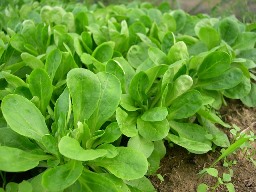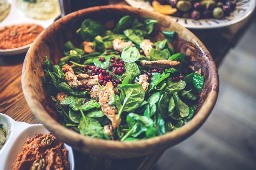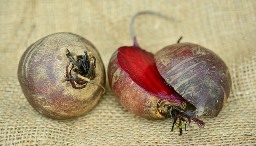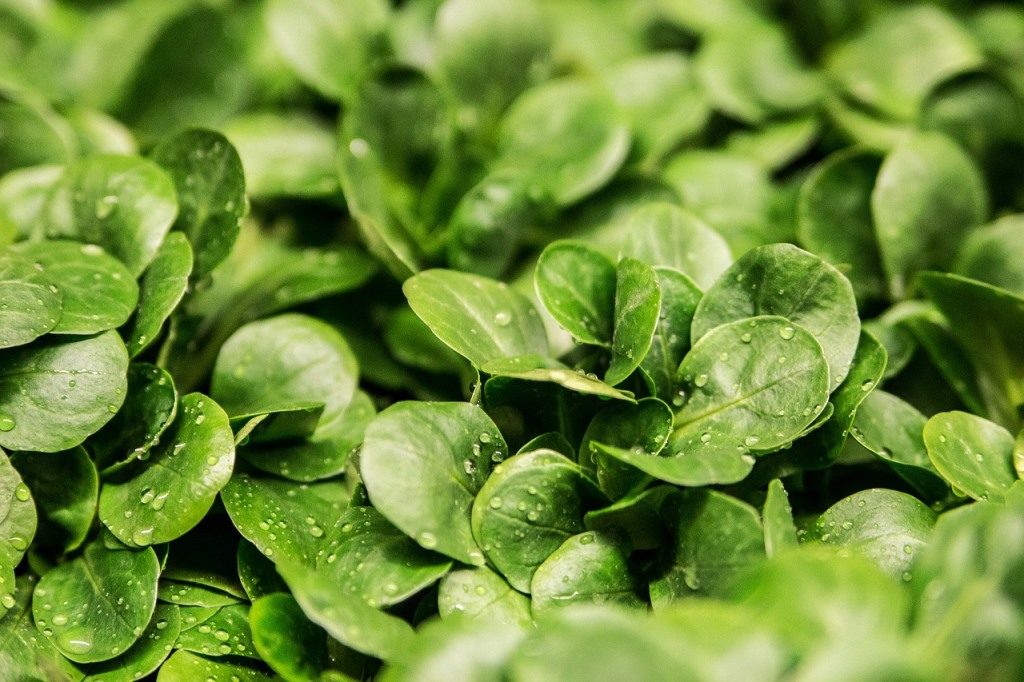Lamb’s lettuceis one of the few types of vegetables which is in season in winter here in Germany. This is why we would like to introduce this salad crop in detail today: its beneficial constituents, what to serve it with for the best taste, and how it is properly cultivated, stored and prepared. Lamb’s lettuce (Valerianella locusta), like garden valerian (Valeriana officinalis), is a member of the Caprifoliaceae or honeysuckle family [1]. The essential valerian oils give lamb’s lettuce its characteristic flavour, which is further intensified by cold weather.
 Corn salad or mâche, as lamb’s lettuce is also commonly known, has been picked as a food crop for centuries. It was first cultivated about 100 years ago. Lamb’s lettuce doesn’t require particularly warm conditions and is easy to grow because it doesn’t have any significant needs from the soil. A looser humus soil which is not over-fertilised with nitrogen is ideal, i.e. a soil which contains little nitrogen so that it does not lead to excessive concentrations of nitrite or nitrosamine in the plant. These substances are associated with an increased risk of cancer and should therefore be consumed in the smallest possible quantities. Even in the case of lamb’s lettuce, we recommend buying from an organic source as the nitrate content is likely to be lower when freely soluble mineral fertilisers are avoided [2].
Corn salad or mâche, as lamb’s lettuce is also commonly known, has been picked as a food crop for centuries. It was first cultivated about 100 years ago. Lamb’s lettuce doesn’t require particularly warm conditions and is easy to grow because it doesn’t have any significant needs from the soil. A looser humus soil which is not over-fertilised with nitrogen is ideal, i.e. a soil which contains little nitrogen so that it does not lead to excessive concentrations of nitrite or nitrosamine in the plant. These substances are associated with an increased risk of cancer and should therefore be consumed in the smallest possible quantities. Even in the case of lamb’s lettuce, we recommend buying from an organic source as the nitrate content is likely to be lower when freely soluble mineral fertilisers are avoided [2].
Health
Lamb’s lettuce is characterised by its unique nutty flavour and it also contains many important nutrients which play a crucial role in our health. Lamb’s lettuce is rich in iron, potassium, β-carotene and folic acid, and it has the highest vitamin C content compared to other well-known varieties of salad [3].
 The food quality of lamb’s lettuce is closely connected to the way it has been cultivated. Lamb’s lettuce which is grown outdoors only grows slowly due to weather conditions (September to March). This results in higher concentrations of the constituents and a stronger flavour.
The food quality of lamb’s lettuce is closely connected to the way it has been cultivated. Lamb’s lettuce which is grown outdoors only grows slowly due to weather conditions (September to March). This results in higher concentrations of the constituents and a stronger flavour.
As lamb’s lettuce is low in calories, like all salad crops, it can be a welcome change to the extremely calorific dishes which are typically consumed over the Christmas period. Delicious meals with low energy density, which have been proven to help maintain or reach a normal weight, can be created using lamb’s lettuce. A decisive factor in cancer prevention is to avoid being overweight as this significantly increases the risk of developing cancer [4].
In the kitchen
 Lamb’s lettuce is a hardy crop and only needs to be covered with a fleece if the temperature falls extremely low in winter. Frozen leaves should not be harvested as they lose their structure when they defrost and are processed. The rosette should be cut off just below the lettuce heart so that the leaves continue to grow and the plant can be harvested several times if required. Lamb’s lettuce has to be eaten shortly after harvesting as it wilts quickly. It should be stored in a cool place until eaten and condensation should be avoided.
Lamb’s lettuce is a hardy crop and only needs to be covered with a fleece if the temperature falls extremely low in winter. Frozen leaves should not be harvested as they lose their structure when they defrost and are processed. The rosette should be cut off just below the lettuce heart so that the leaves continue to grow and the plant can be harvested several times if required. Lamb’s lettuce has to be eaten shortly after harvesting as it wilts quickly. It should be stored in a cool place until eaten and condensation should be avoided.
Lamb’s lettuce tastes best combined with nuts (especially walnuts and hazelnuts), cheeses (e.g. Gorgonzola, goat’s cheese and Camembert), other types of vegetables (such as fennel, celery and carrots) and with fruit (e.g. apples, pears and oranges). As an example of a tasty salad recipe for winter, see below for a delicious lamb’s lettuce recipe which provides many nutrients and is also easy to make.
Crispy lamb’s lettuce with beetroot carpaccio
 Ingredients for 4 persons:
Ingredients for 4 persons:
4 bulbs beetroot
200 g lamb’s lettuce
50 g walnuts
200 g goat’s milk cream cheese (à 50 g per person)
1 pomegranate (seeds)
8 tbsp balsamic vinegar
5 tbsp walnut oil (or rapeseed oil)
1 tbsp mustard
2 tbsp honey
salt and pepper according to taste
Preparation:
- Peel the beetroot and boil in water until tender, then leave to cool.
- Clean the lamb’s lettuce and wash several times under running water as it is usually very sandy.
- Dry using a salad spinner.
- Grate the cooled beetroot into very thin slices.
- Tip: It is best to wear gloves as beetroot stains.
- Chop the walnuts roughly.
- To open the pomegranate:
- Tap on the skin with a spoon to make the seeds inside a little looser.
- First, remove the crown at the top of the pomegranate.
- Then chop off a section from the bottom.
- Slice into the pomegranate skin all the way around, from top to bottom.
- Break open the skin where the cuts have been made.
- Tap the seeds out of the skin.
- To make the dressing: place the vinegar, oil, mustard and honey in a container and finely puree using a hand mixer. Season with salt and pepper to taste.
- Serve the lamb’s lettuce on four plates.
- Place the beetroot slices on top of the leaves.
- Then sprinkle the walnuts and pomegranate seeds on top.
- Next, add small pieces of the goat’s cheese.
- Drizzle the dressing over shortly before serving.
Bon appetit!
Our posts on pomegranate and beetroot will soon be available on this blog, providing additional information related to this recipe. This post was written in collaboration with the oncological nutritional therapy team at the Comprehensive Cancer Center (Dietician intern at LMU Großhadern, A. Hopp).
